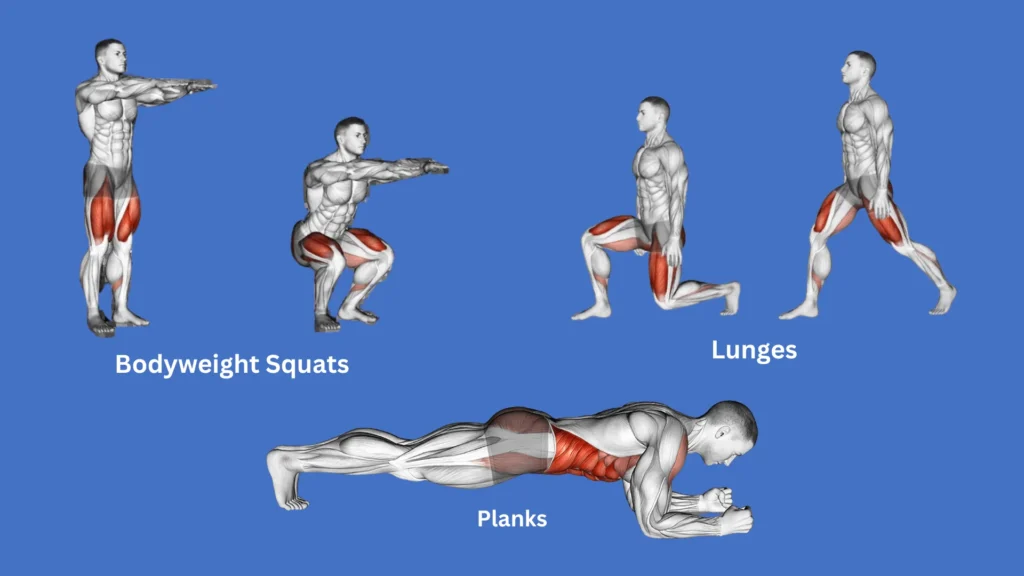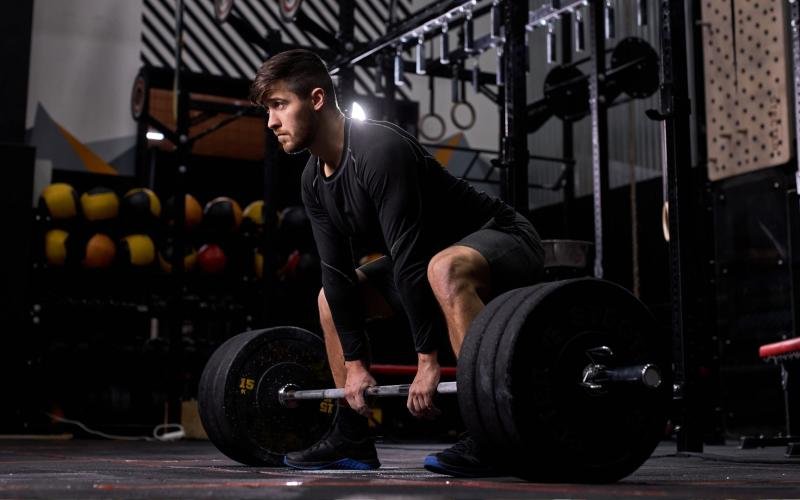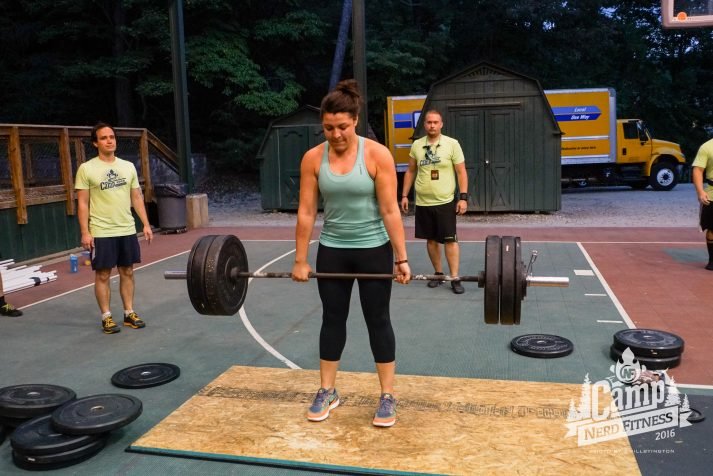Introduction
Everyone wants a workout routine that’s effective, sustainable, and tailored to real life. Too many plans fail because they’re overly ambitious, poorly structured, or forget recovery.
In this article, you’ll get simple but proven workout templates, principles that matter more than fancy trends, ways to adapt to your schedule and equipment, and how to measure progress without guessing. Let’s build a routine you’ll look forward to doing.

Why some routines work and others don’t
- The best routines are built on consistency, progressive overload, and recovery.
- You must enjoy parts of the plan — a program you dread is one you’ll abandon.
- Adaptability is key: your life, energy, and schedule will vary, so the plan must be flexible.
- The recent trends in fitness emphasize wearables, biofeedback, and data-driven training—they help you avoid overtraining and tailor sessions to your readiness.
Read More: Free Workout Plans
How to choose the right template for you
Evaluate along these dimensions:
| Factor | Questions to ask |
|---|---|
| Goal | Are you aiming for strength, fat loss, endurance, general fitness, or mobility? |
| Time | How many days and how many hours per week can you realistically commit? |
| Experience | Are you a beginner, intermediate, or advanced? |
| Equipment | Do you have a full gym, limited gear, or none at all? |
| Recovery & stress | How much rest do you need, and how much fatigue can your body tolerate? |
Once you answer those, pick a template (below) and adjust it to your constraints and preferences.

Five solid routine templates
1. Beginner — Full-Body (2–3 days/week)
- Focus on the big compound movements: squat, hinge (deadlift/hip hinge), push, pull, core.
- Each session: warm-up; 3 main compounds (e.g. squat, press, row); 1–2 accessory movements; a short mobility or conditioning finisher.
- Progress by adding small weight or rep increases weekly.
- This format helps you build strength, movement patterns, and consistency without overcomplication.
2. Strength Foundation — Upper / Lower Split (4 days/week)
- Two “heavy” days and two “lighter/accessory” days (upper body heavy, lower body heavy, upper accessory, lower accessory).
- Use 3–5 sets of low to moderate reps (3–8) for major lifts; accessory work in 8–12 range.
- Good middle ground: more volume without overdoing it.
3. Hypertrophy / Muscle Growth — Push / Pull / Legs (5–6 days/week)
- Divide sessions into pushing muscles, pulling muscles, and legs.
- Each muscle group can be stimulated twice per week (e.g. push + push, pull + pull, legs + legs) by smart scheduling.
- Use moderate volume (3–4 sets) and moderate rep ranges (6–12) for growth.
- Include lighter or heavy variation days to mix stimulus.
4. Fat-Loss & Time-Efficient — Strength + Interval Work (3–4 days)
- Combine compound resistance training with high-intensity interval work.
- Example: two full strength sessions + two short HIIT / cardio intervals.
- This mix preserves muscle while maximizing calorie burn in minimal time.
5. Longevity & Low Impact — Mobility, Circuits & Steady Work (3–5 days)
- Use circuits combining strength, balance, and mobility.
- Add steady-state cardio (walking, swimming, cycling) for endurance.
- Emphasize joint health, movement quality, flexibility.
- Ideal for those recovering from injuries, older adults, or people seeking sustainable fitness.

Sample week (intermediate, 5 days)
- Monday: Upper (heavy) + mobility work
- Tuesday: Lower (heavy) + short steady-state
- Wednesday: Active recovery (walking, foam-roll, light mobility)
- Thursday: Push (volume) + HIIT finisher
- Friday: Pull + legs mix (moderate)
- Saturday: Cardio / sport / class / movement you enjoy
- Sunday: Rest / full recovery
Programming rules that matter most
- Progressive overload
- Increase weight, reps, or work density gradually.
- Avoid chasing big jumps too fast—small increments are more sustainable.
- Frequency & volume balance
- Hitting each muscle ~2 times per week is often ideal for many trainees.
- Beginners need lower weekly volume; intermediates/advanced need more.
- Periodization & deloading
- Cycle through phases: heavier weeks, lighter weeks, recovery deloads.
- Plan for a lighter week every 4–6 weeks for your body to reset.
- Recovery is training
- Sleep, nutrition, hydration, stress management, and mobility/prerehab work support adaptation.
- Overtraining often stems from neglecting rest, not pushing hard.
- Smart tracking & adjustment
- Keep a log of weights, reps, perceived effort.
- Use subjective data (fatigue, soreness, mood) to guide when to hold or push.
- Adjust volume or intensity before injury or burnout occurs.

Nutrition, sleep & recovery (mini primer)
- Protein: Aim for ~1.6 to 2.2 g per kg of bodyweight to support muscle growth/retention.
- Calories: Moderate deficit (for fat loss) or slight surplus (for gains). Avoid large swings.
- Sleep: 7–9 hours per night to support performance, hormone balance, and recovery.
- Mobility & stretching: Use active warm-ups, dynamic mobility, and occasional static stretching to maintain range of motion and prevent injuries.
- Rest days: Don’t skip them—they allow adaptation. Active rest (walking, light movement) often helps.
Common pitfalls & how to avoid them
- Too much, too soon: Don’t jump into 6-day intense plans if you haven’t built a base.
- Ignoring technique: Poor form accelerates injury. Focus on movement quality first.
- Overemphasis on “harder = better”: Not every session needs to be maximal. Use lighter days.
- Neglecting mobility & joint health: A strong body with limited range can still break down.
- Chasing gimmicks: Fancy equipment or trending methods don’t replace progressive effort and consistency.
Measuring success (beyond the scale)
- Strength markers: Track lifts in major movements (e.g. squat, press, hinge).
- Body composition trends: Use photos, measurements, and tape tracking—don’t obsess with daily weight.
- Performance improvements: Better endurance, faster recovery, higher rep ability.
- Well-being: Energy levels, sleep quality, injury frequency.
- Consistency: The number of sessions you complete vs. plan.

Sample 8-Week Progression for Beginners
- Weeks 1–4: 3 full-body workouts per week, 3 sets × 8–12 reps on main lifts, learn form.
- Weeks 5–8: Transition to 4 workouts (upper/lower split). Use 3–5 sets × 5–8 reps on main lifts, add one short conditioning session or mobility focus.
- Increase load or reps when you can complete your target with good form. Use a light week in week 8 if needed before beginning next block.
FAQs
Q: What is the best workout routine for beginners?
Start with a full-body plan 2–3 times per week emphasizing compound lifts. Focus first on technique, consistency, and gradual progression before worrying about complexity.
Q: How many days per week should I train to see results?
Generally, 3–5 quality training sessions per week produce reliable results. Beginners can progress even with 2–3 sessions, but 4–5 sessions allow more volume and flexibility.
Q: Is HIIT better than regular cardio?
HIIT gives more work in less time and may improve cardiovascular metrics faster, but steady-state cardio is gentler on recovery. The right mix depends on your goals, fitness level, and recovery ability.
Q: In what order should I do strength and cardio?
If your primary goal is strength, do strength training first while you’re fresh. If cardio is your main target, prioritize it first. Alternatively, separate them by a few hours or do conditioning after strength.
Q: How long should a workout session last?
There’s no one-size-fits-all—but many effective workouts fit into 30 to 60 minutes. Short, intense sessions can work for strength or conditioning; high-volume hypertrophy work may take longer. Choose a duration you can habitually maintain.
Read More: Bump on Roof of Mouth: Causes, Care & When to See a Doctor
Conclusion
The “best” workout routine isn’t the flashiest one you see on social media—it’s the one you’ll stick with, improve on, and maintain long term. Choose a template that fits your goals, schedule, and resources. Build around compound movements, track progress carefully, and prioritize rest, nutrition, and movement quality.
Every few weeks, revisit your plan, adjust volume or intensity, and keep the habit alive. Results come from consistency, not drastic overnight transformations. Start now, stay steady, and enjoy the journey.